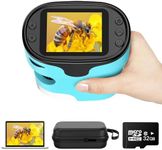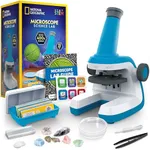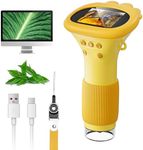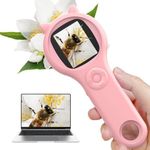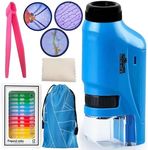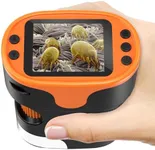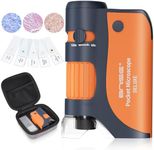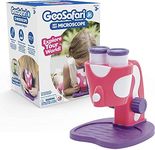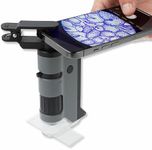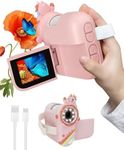Buying Guide for the Best Handheld Microscope For Kids
Choosing a handheld microscope for kids can be a fun and educational experience. The right microscope can spark curiosity and help children explore the world around them in detail. When picking a microscope, it's important to focus on features that make it easy and enjoyable for kids to use, while also being durable enough to withstand regular handling. Understanding the key specifications will help you select a model that matches your child's age, interests, and learning goals.Magnification RangeMagnification range tells you how much larger the microscope can make objects appear. This is important because it determines what kinds of details your child will be able to see. Lower magnification (around 20x to 40x) is great for looking at things like leaves, fabric, or coins, while higher magnification (up to 200x or more) lets kids see smaller details like cells or tiny insects. For most kids, a microscope with a range of 20x to 100x is a good starting point, as it offers enough detail without being too difficult to use. If your child is older or especially curious about very small things, a higher range might be more engaging.
Ease of UseEase of use refers to how simple and comfortable the microscope is for kids to handle. This includes things like the size and weight of the microscope, how easy it is to focus, and whether it has simple controls. For younger children, look for microscopes with large, easy-to-turn knobs and a lightweight design that fits comfortably in small hands. Older kids might enjoy models with more features, but it's still important that the microscope isn't too complicated to operate. Choosing a microscope that matches your child's age and dexterity will make the experience more enjoyable and less frustrating.
DurabilityDurability is about how well the microscope can withstand drops, bumps, and regular use by kids. Since children can be a bit rough with their toys and tools, it's important to pick a microscope made from sturdy materials like thick plastic or rubberized parts. Some microscopes are designed with extra protection around the edges or have shock-resistant features. If your child is very young or tends to be energetic, prioritize durability to ensure the microscope lasts longer and stays safe to use.
LightingLighting is crucial for seeing details clearly through a microscope. Many handheld microscopes for kids come with built-in LED lights that help illuminate the object being viewed. Some have adjustable brightness, which can be helpful for different types of specimens. If your child will be using the microscope indoors or in low-light conditions, make sure it has a good light source. For outdoor use, natural light might be enough, but built-in lighting still adds flexibility. Consider how and where your child will use the microscope to decide how important lighting features are.
PortabilityPortability refers to how easy it is to carry the microscope around. Handheld microscopes are designed to be portable, but some are more compact and lightweight than others. If your child likes to explore outside or take the microscope to school or on trips, look for a model that is small, light, and easy to pack. Some microscopes come with carrying cases or wrist straps, which can make them even more convenient for on-the-go adventures.
Power SourceThe power source determines how the microscope's lights and any electronic features are powered. Most handheld microscopes for kids use batteries, which makes them easy to use anywhere. Some may have rechargeable batteries, while others use standard disposable ones. Think about how often your child will use the microscope and whether you'll be able to recharge or replace batteries easily. For frequent use, rechargeable options can be more convenient, but for occasional use, standard batteries might be just fine.
